Would you believe me if I say that my favorite recipe in The Artful Baker doesn’t have chocolate or caramel in it? It isn’t one of the many ice cream recipes either. I can almost hear you gasp. I know, I wasn’t expecting it either. Considering that there is a chocolate cake using over a pound of chocolate (the one on the cover), this is a big statement, but my favorite recipe in the book is the Sour Cherry and Almond Upside-Down Cake.
And it would still be a contender even without the sour cherries on top. It is that good.
It is also one of the easiest recipes in the book. For the cake, you put the ingredients into the bowl of a food processor one after another and press a button.
So what do you do when you develop a recipe like that? You simply test all the variations you can think of.
I certainly wasn’t disappointed with the walnut version which I topped with a banana and milk chocolate ganache or the pistachio version which I’m currently contemplating on transforming into a pound cake, but none of the variations came close to the original.
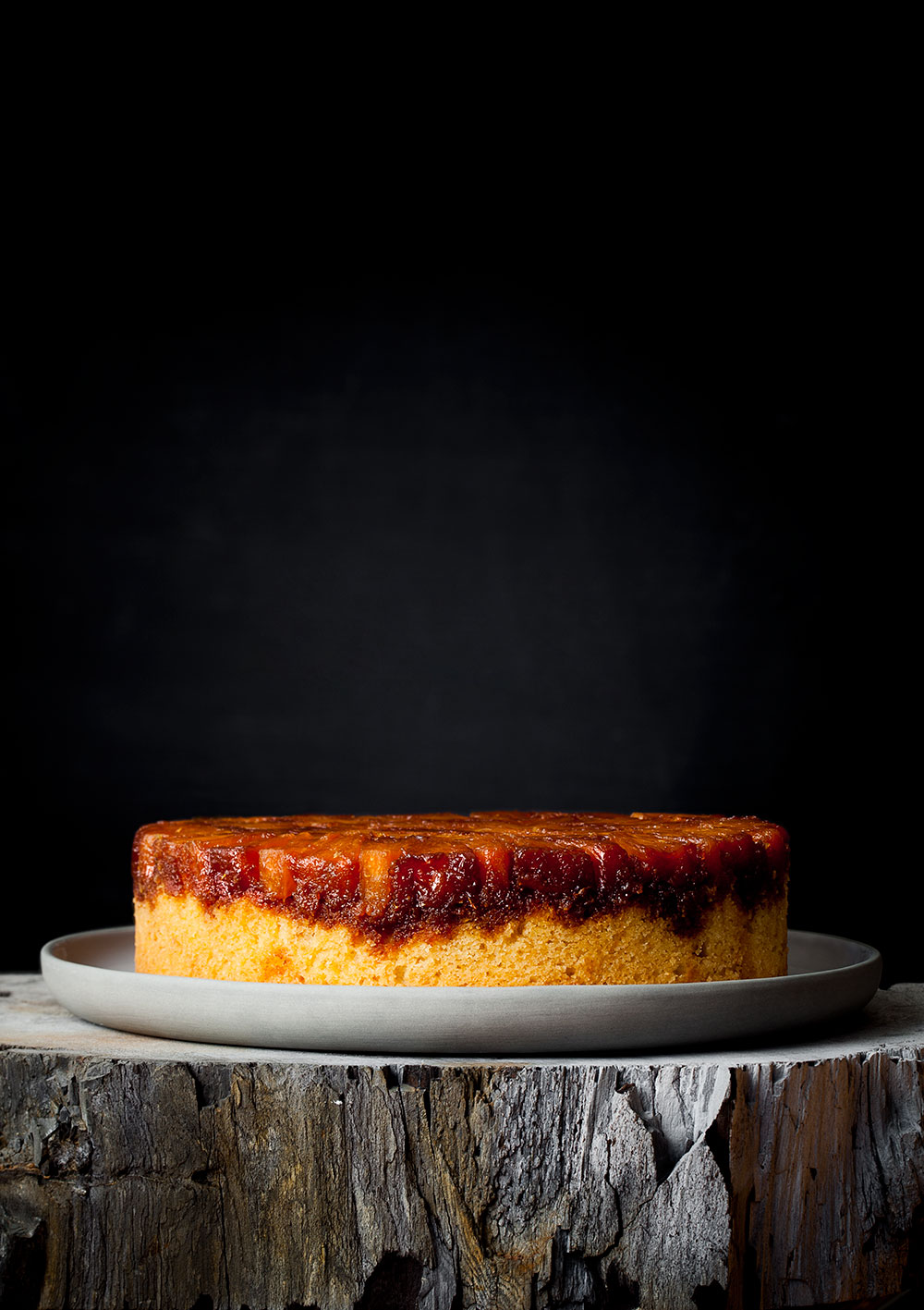
That is until I thought of a coconut version many years later.
There’s only two and a half months left before The Artful Baker is released (on October 17 to be exact) and I’ll make sure to share the original recipe then, but you don’t have to wait that long to get an idea. This pineapple and coconut version is just as good.
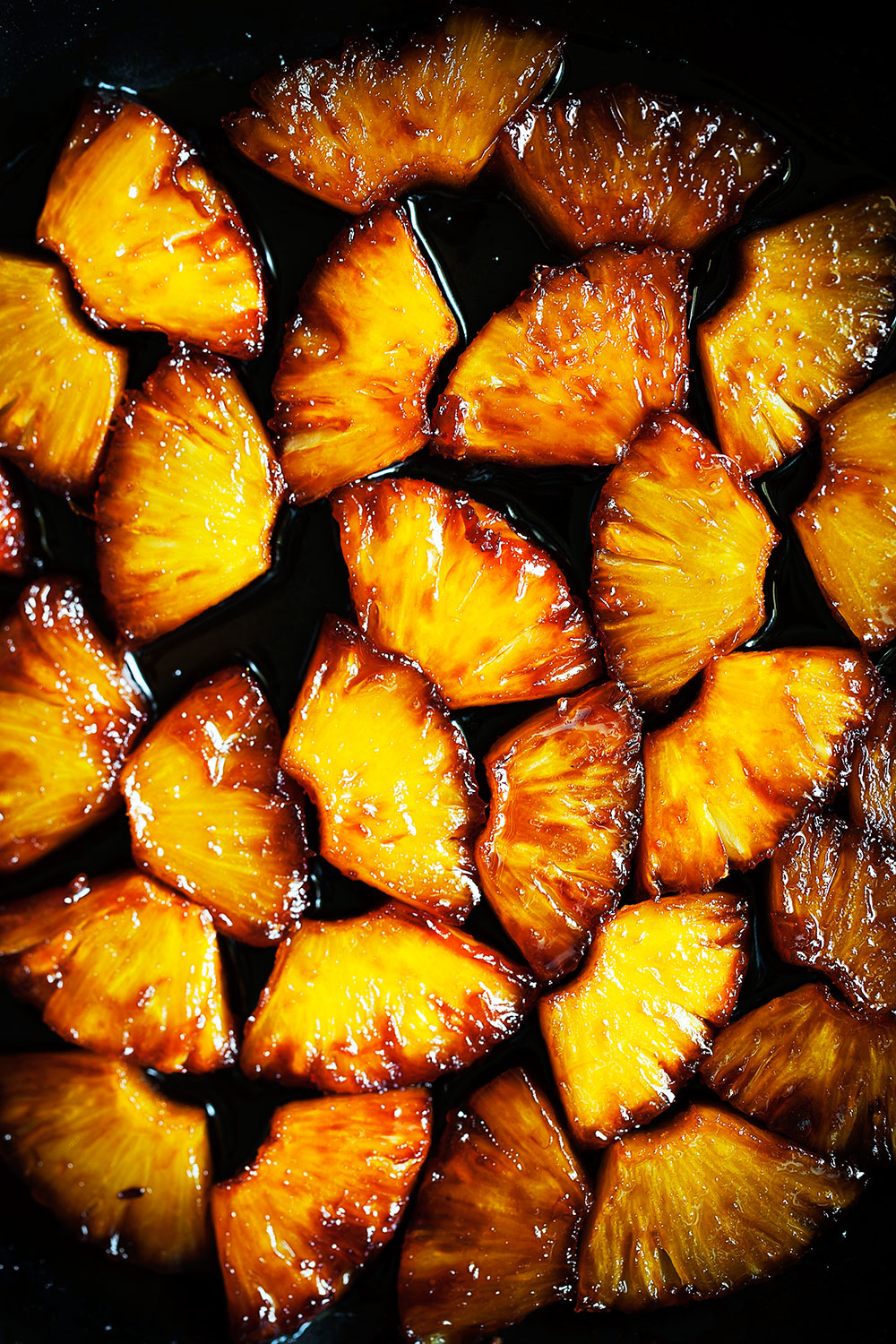
For the fruit layer of upside-down cakes, I prefer to cook the fruit before arranging them on the bottom. This enables me to fit in more fruit and prevent the bubbling juices from leeching into the cake.

In the case of this pineapple version, I cut the pineapple slices into small pieces and arranged them in concentric circles to maximize the amount of fruit. For an 8-inch round cake, seven slices of pineapple is a pretty good amount, don’t you think?
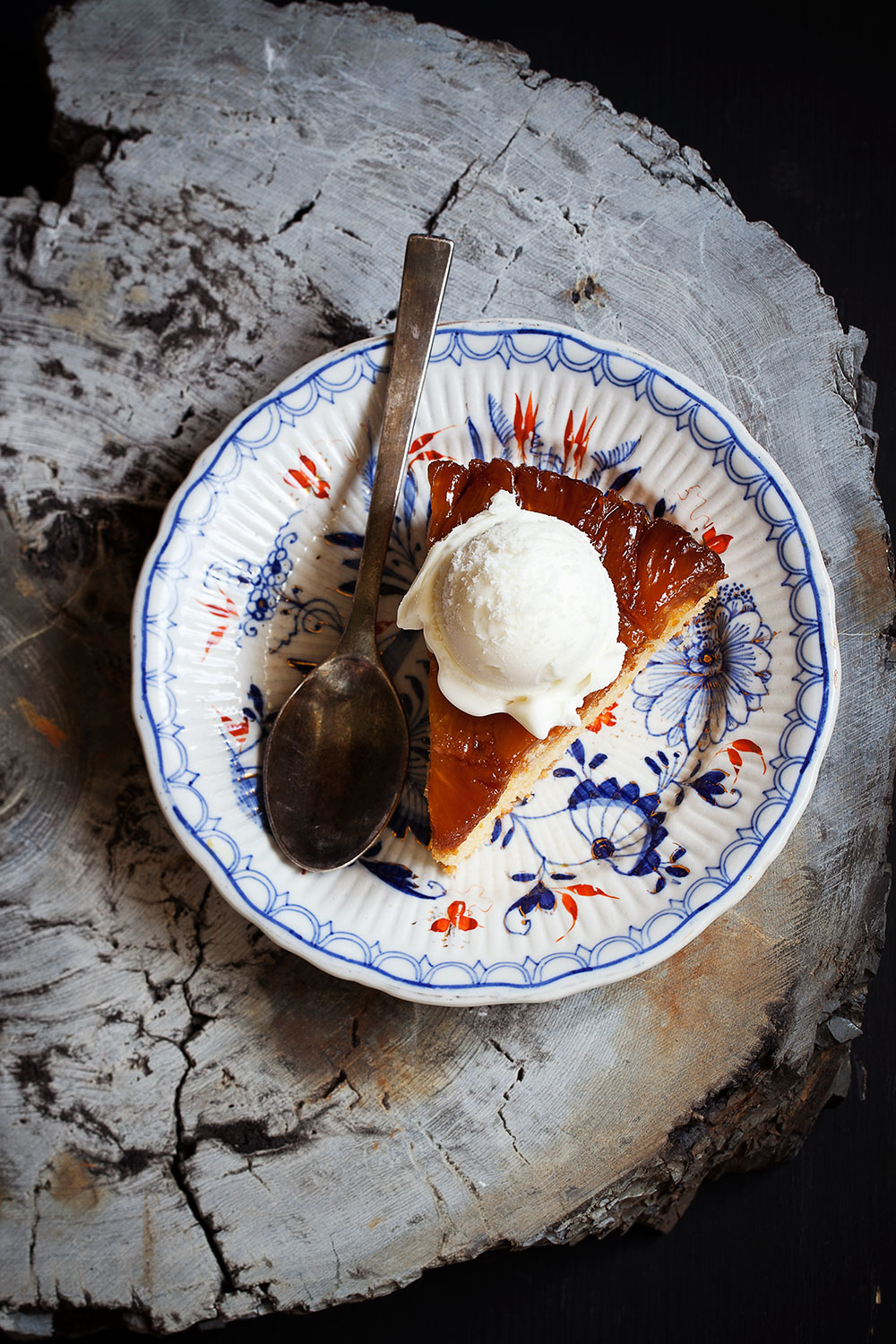
Not that you need yet another reason to run immediately into the kitchen, but the cake gets better with time, too.
PINEAPPLE & COCONUT UPSIDE-DOWN CAKE RECIPE
Serves 8
FRUIT LAYER
- 1/3 cup (67 grams) granulated sugar
- 1 tablespoon (15 grams) unsalted butter
- 7 3/4-inch-thick fresh pineapple slices (1.54 pounds; 700 grams; from about 2 medium fresh pineapples), cut into quarters lengthwise
CAKE
- 3 large eggs, at room temperature
- 1 teaspoon (5 grams) pure vanilla extract
- 1 3/4 cups (140 grams) unsweetened shredded dried coconut
- 3/4 cup (105 grams) all-purpose flour
- 3/4 cup (150 grams) granulated sugar
- 1 1/2 teaspoons (6 grams) baking powder
- 1/4 teaspoon (2 grams) fine sea salt
- 10 tablespoons plus 2 teaspoons (5.3 ounces; 150 grams) unsalted butter, cut into large pieces and softened, plus more for pan
SERVING
- Vanilla or coconut ice cream, optional
- Set a rack in the middle of the oven and preheat the oven to 325°F (160°C).
- To make the fruit layer, put the sugar in a 12-inch (30.5-cm or larger so that you can cook all the pineapple pieces at once), high-sided skillet and shake the skillet to level the sugar. Set the skillet over medium-high heat. As soon as the sugar melts on the edges, drag the outer edges to the center with a silicone spatula to moisten the dry parts. Once the sugar melts completely, stop stirring and cook until the caramel turns a dark amber color. Remove the skillet from the heat, add the butter and stir until melted. Be careful; the caramel will bubble up vigorously and hot steam will rise. Arrange the pineapple pieces in a single layer and cook until they are caramelized on the bottom, about 7 minutes. Flip the pieces and cook until they are caramelized on the other side, about 5 minutes. Transfer the caramelized pineapple pieces to a cutting board and let cool completely.
- Butter the bottom of an 8-inch (20.5-cm) round cake pan, line the bottom with a parchment round, and wrap a dampened cake strip around the pan. (I highly recommend using a cake strip to prevent a domed top, which can cause the fruit layer to crack after the cake is inverted onto the serving plate.)
- To make the cake, in a small bowl, whisk the eggs and vanilla with a fork until blended.
- In the bowl of a food processor fitted with a metal blade, process the coconut, flour, sugar, baking powder, and salt until well blended, about 1 minute. Add the butter pieces and pulse until the dough gathers around the blade, about 1 minute. Add the egg mixture and process until blended, about 20 seconds, scraping down the sides of the bowl as needed. The batter will be very thick.
- Cut the cooled pineapple slices in half lengthwise and arrange them in tightly packed concentric circles on the bottom of the prepared pan, alternating the pieces for the two outer circles pointed ends up and down so that there are no gaps left between them (see photo above). Scrape the batter over the fruit layer and spread it evenly with a small offset spatula.
- Bake until a wooden toothpick inserted into the cake comes out clean, 55 to 60 minutes. Set the pan on a wire rack to cool completely. Pressing firmly against the pan, run a small knife around the edge to loosen the cake, invert onto a serving plate, and remove the parchment round.
- Serve warm or at room temperature, with vanilla or coconut ice cream if you wish.
Storage: The cake will keep, wrapped airtight, at room temperature for up to 3 days.
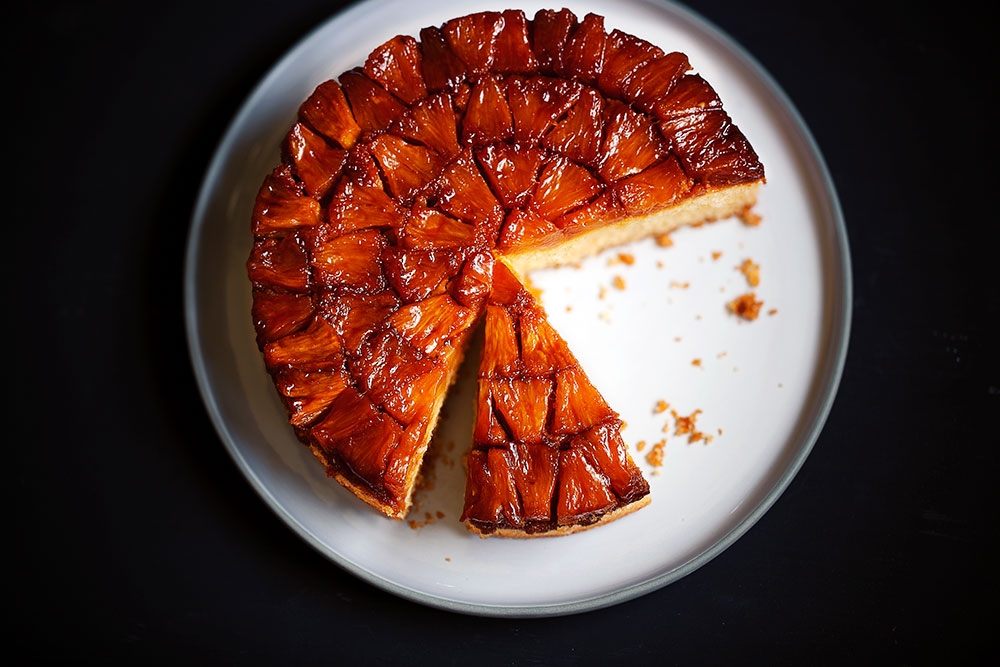
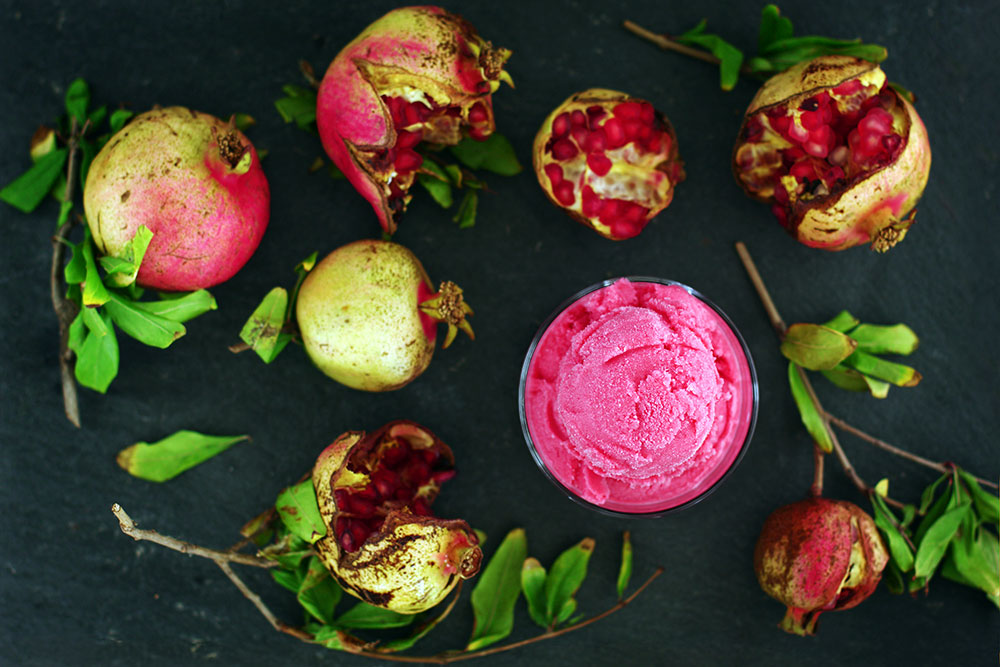
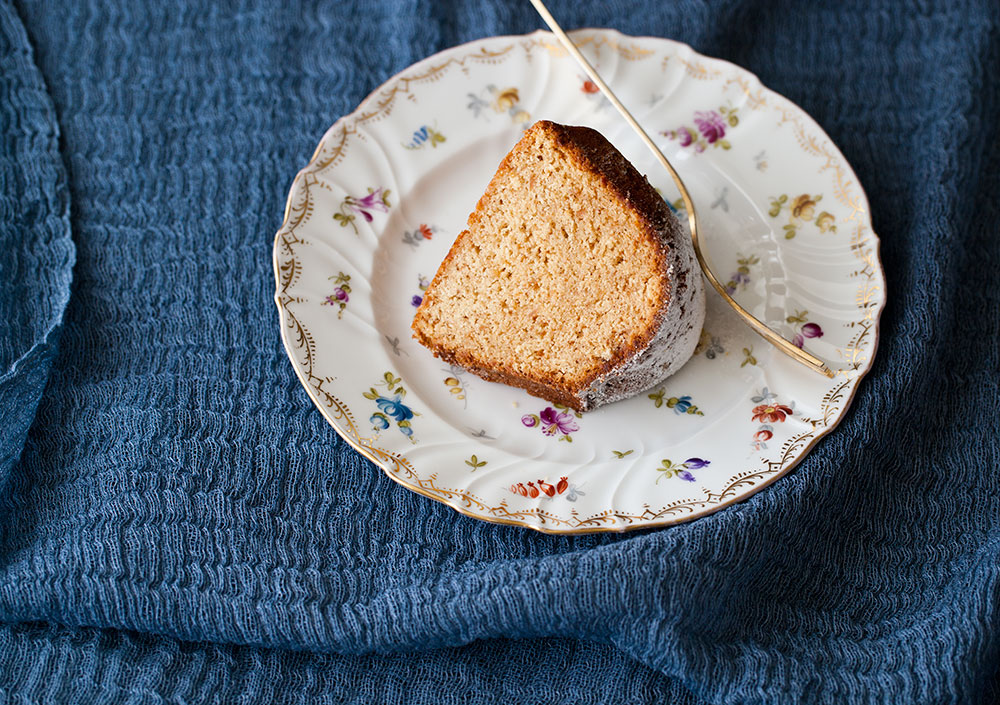
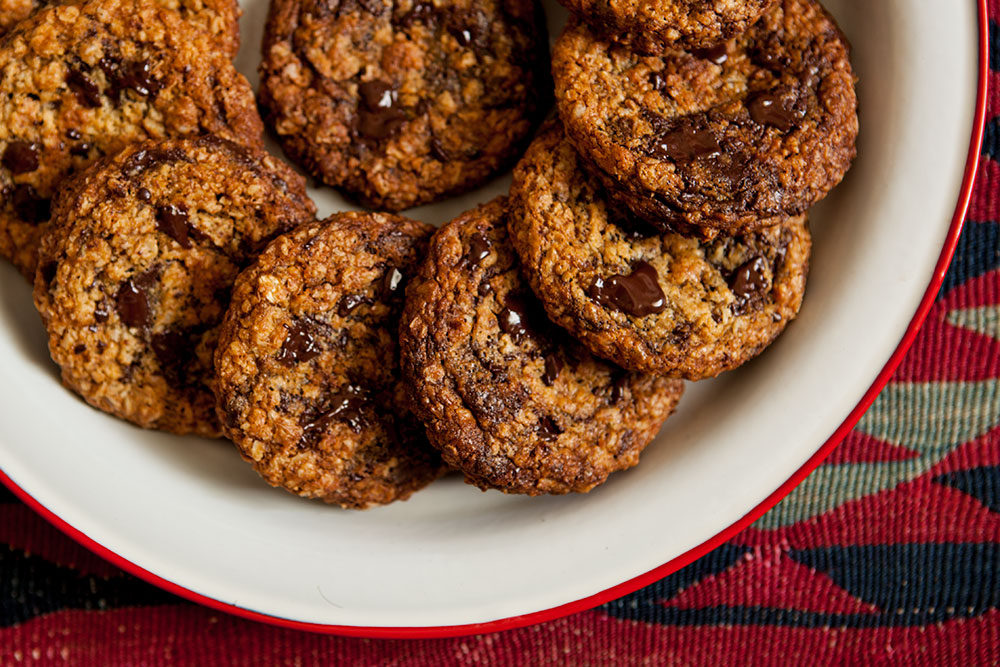
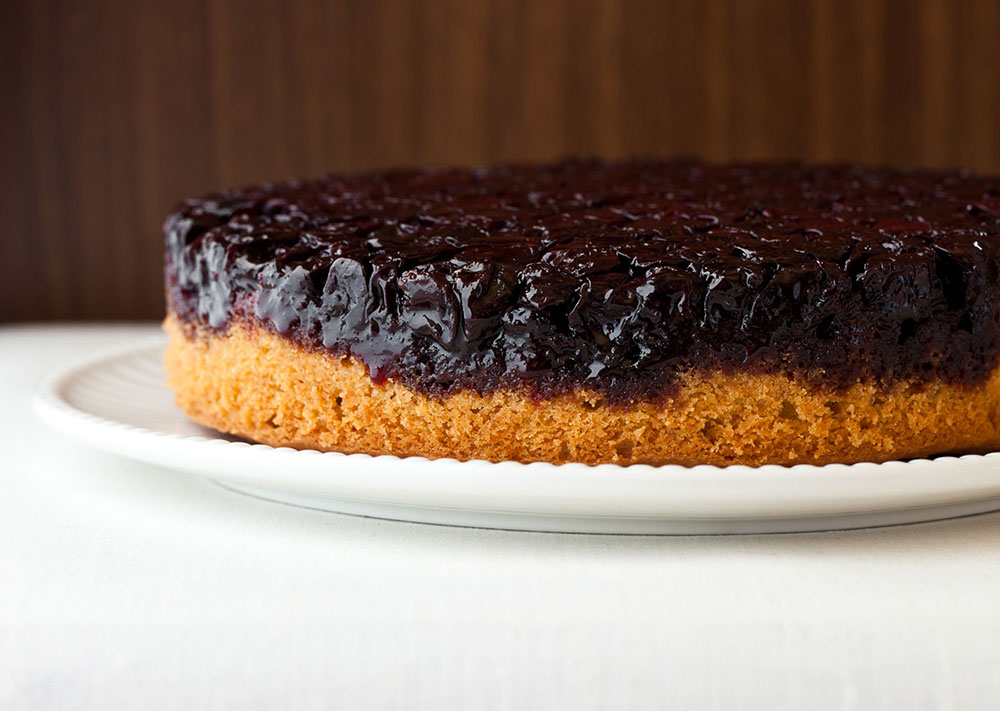
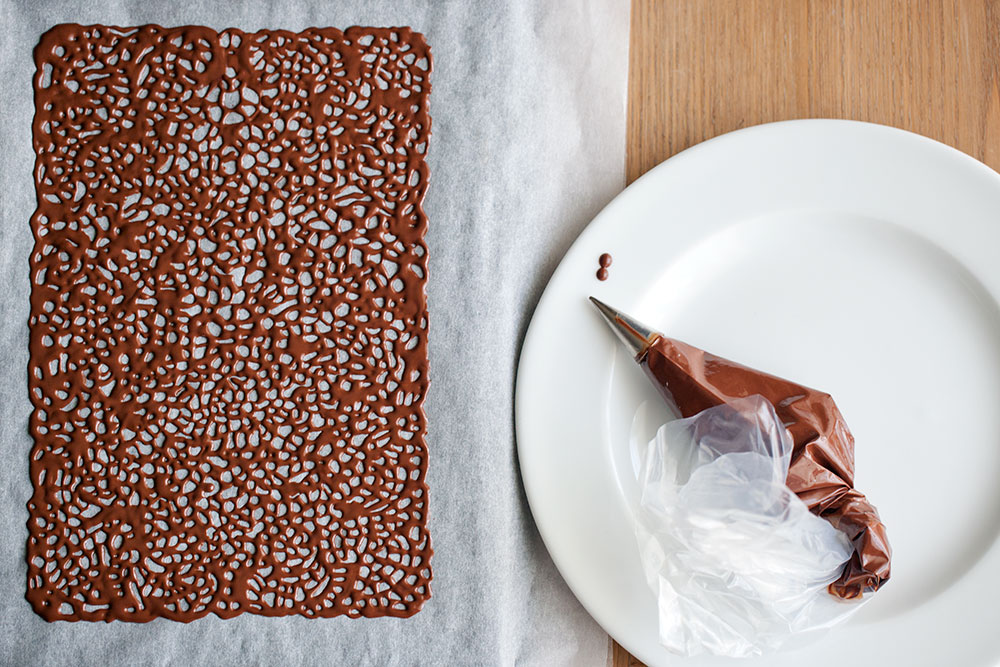
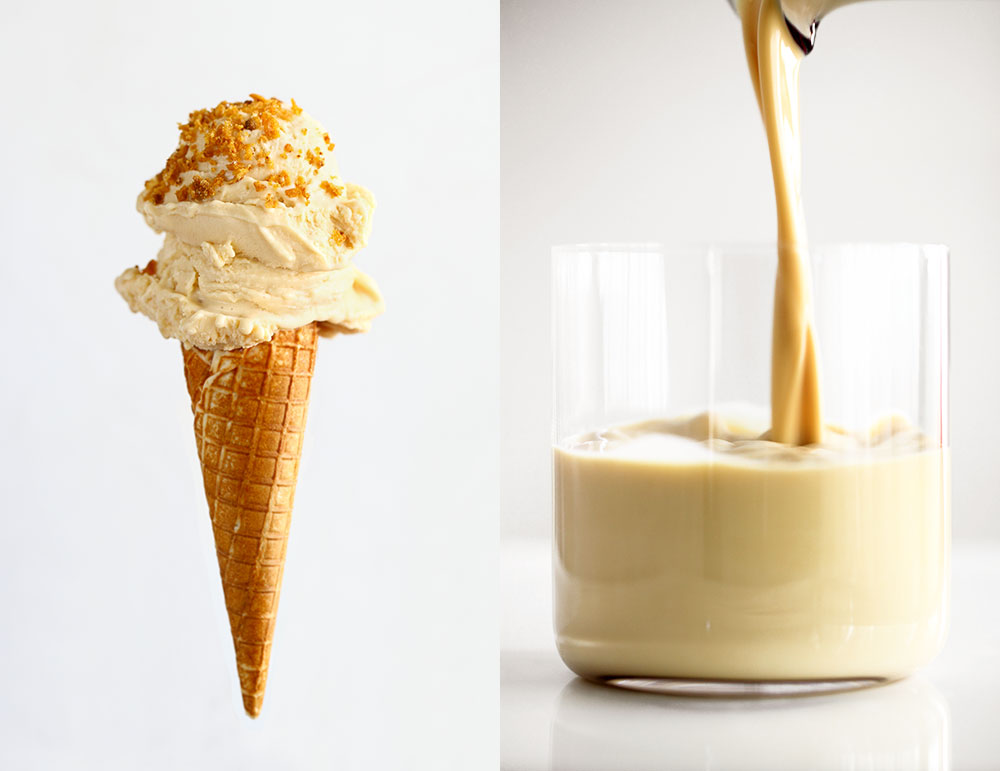
That looks yummy! I will definitely try the recipe.. Thanks for sharing!
So cool… i will try it for sure.
Absolutely stunning, I am already imagining the delightful interplay of rich flavors and textures in this most welcoming of cakes. Thanks for keeping us well fed with your genuis recipes!
That looks really delicious!
Trying it right now. Last weekend, I collected a few star fruits from my grandmother house located at South Costa Rica, so I’ll let you know how it turns out when changing the pineapple. Star fruit or carambola as we call has more acidity than the pineapple, so cooking it in caramel before baking it sounds like a good idea. Thank you for the recipe.
Great, a project to put in action, excited about it. Thanks for the inspiration/encouragement and the recipe.
Hi Cenk, could I substitute any of the butter with coconut oil? Thanks for the great recipe!
Chrysa – That also crossed my mind, but I didn’t give it a try. I’m guessing it would work, but can’t know for sure without trying first.
We would love to try it. . .
Hi Cenk and thanks for the reply. I actually baked the cake the other day and followed your recipe. It turned out delicious – and with vanilla ice cream it was heaven! Next time I will try using coconut oil and will let you know! Looking forward to the book release!
I tried this recipe. It came out really good. I had a little trouble caramelizing pineapple. Anyway it was really yummy with vanilla ice-cream. Everyone loved it. Thank you 🙂
Hello I followed the link for the Sour Cherry Cake as I am unable to source the cherries. I noticed that this pineappy version of the cake does not have almond flour. Are the cakes similar in texture? Thank you
Yes, very similar. You can use the almond version for the pineapples, too.
Hi Cenk. This is Yeji from Korea. I love your book ‘The artful baker’ and my favourite is ‘Raspberry Pistachio Crumb Cake’ so far. I made this pineapple cake this morning, but the texture came out quite dry. I guess I did something wrong. The thing is I don’t have a proper food processor yet, so used a stand mixer following the same instruction written. Do you think it was the reason I didn’t get a soft, moist texture? also, it took only 35minutes to bake the cake. I live in Australia so I’m thinking to make the cherry version when possible. Do you think it is not a good idea to make that cake unless I buy the food processor? sorry about a lot of questions. Anyway, I really like your recipes and especially the way they look. very simple but amazingly attractive. It’d be really appreciated and very helpful if you could give me some comments. Thank you so much.
Thanks a lot for your kind words! I’m so glad to hear you love my book. You can certainly make this cake with a stand mixer, but I would advise you to take a different approach. Instead of mixing the ingredients in the order described, you should follow the steps of a classic butter cake–whisk butter and sugar first, whisk in the eggs one by one and then fold in the dry ingredients. Also, since you won’t be using a processor, the coconut pieces won’t have a chance to pulverize, so maybe you can use coconut flour instead (or use dried shredded coconut as instructed if you don’t mind a coarse texture). Hope this helps.